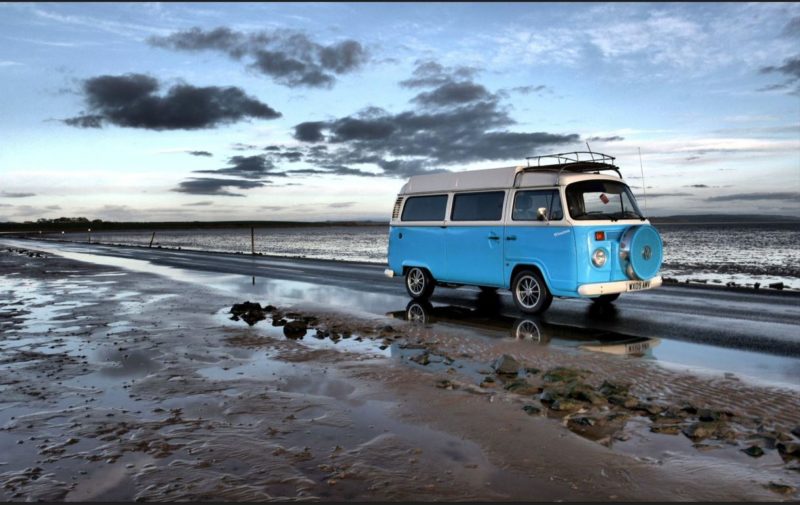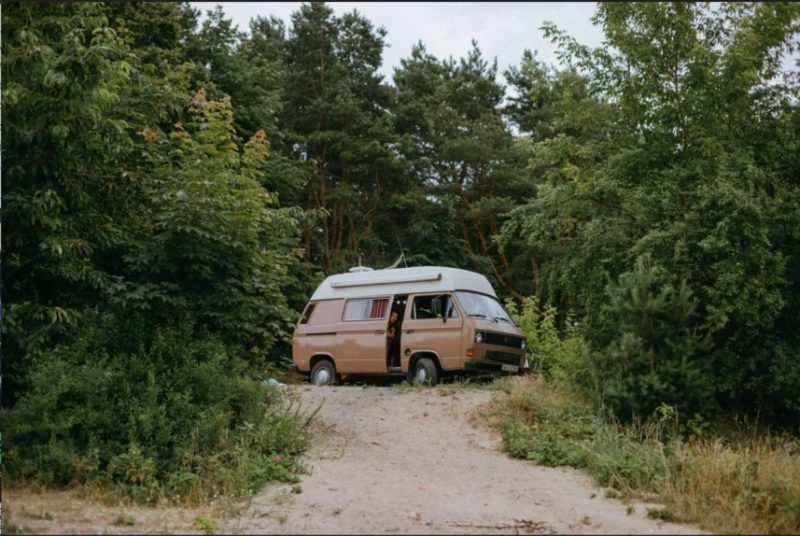For many campers both groups or solo, traveling in an RV or campervan is about connecting with the outdoors, finding comfort in nature, and accepting life, unconnected.

While some campers can’t live without electricity and WiFi, others like to disconnect through boondocking. Not only is boondocking a way to disconnect, but boondocking is cheap travel, convenient, and sometimes scenic. All you need to boondock with success is to know the basics.
What is boondocking?
Boondocking in a campervan or RV is when you camp without any connection to water, electricity, or sewage.
Where did the term Boondocking come from?
The term boondocking was coined in the 20th century and came from the Tagalog word bundók, which means mountain. Originally, boondocking was meant to refer to camping in a remote area. Now, boondocking extends to camping in any location without plug-ins or facilities.
Is Boondocking legal
Boondocking is completely legal when it does not conflict with natural resources, wildlife, or authorized activities such as camping. In the USA, The Bureau of Land Management provides a list of public lands according to each state where boondocking can occur.
How to Find Locations for Boondocking
In terms of location, boondocking can occur anywhere from a local business’ parking lot to camping in a national forest. Oftentimes, boondocking is free unless you’re looking to stay at a boondocking site which can lead to charges of up to $20 per night.

What is the Difference between Dry Camping and Boondocking?
Boondocking is not to be confused with dry camping. Dry camping can also fall under the category of camping without hookups; however, dry camping occurs on official campsites. Dry camping is typically more expensive due to amenities such as paved roads and bathrooms.
What to know before Boondocking
Check the Weather Forecasts
Before setting out for a few nights in the wilderness, be sure to check weather forecasts, especially when electricity is not an option. To avoid running the A/C or RV heater, set out when temperatures fall between 40°F and 70°F (4~21°C degrees).
Be sure to take into consideration how the weather can affect the terrain you plan on entering. Rain can lead to floods. Wildfires can lead to road closures. Snowstorms can trap your vehicle entirely. Weather conditions should always be considered when traveling unplugged.
Accessing Clean Water Supply

Ensure that your black and gray tanks are emptied and that your water tanks are full when boondocking. While there is no set amount of water needed to boondock, having full water tanks and even a water bladder can help.
Where do you Shower when Boondocking
Account for bathroom use, showers, dishes, and drinking water when analyzing your water usage. Also, consider the number of people in your party and the length of your trip.
Whether you’re staying at an official boondocking site or on public property, the odds are high that you won’t have a bathroom to use. If you don’t have a bathroom on board, a portable toilet can be a fantastic option to avoid burying waste in an 8-inch hole.
If using the bathroom isn’t an option then it’s probably safe to assume that showering isn’t an option either. Lakes, gyms, and national parks often have options for showering, try this whenever possible. When these are not options, opt for wet wipes, powder baths, dry shampooing, or skip showers altogether for that period of time.
To minimize wasting water on dirty dishes, opt for grilling, paper plates, or meal prepping. If you do decide to cook all your meals, try washing dishes at the end of the day. Filling the sink with soapy water and washing dishes at once can minimize water usage by eliminating constantly running water.
Accessing Electricity
Electricity without hookups can come with some complications; however, there are plenty of power source options to run your appliances.
1. Generators
Generators are the most common power source when dealing with motorhomes and campervans. Not only are generators common and powerful, but they are also extremely easy to use.
Generators may be perfect for anyone looking to power larger appliances such as microwaves and air conditioning units; however, generators aren’t the most environmentally friendly as they pull gas or diesel from your tank due to their connection to fuel lines.
The good news is that portable generators for camping provide stable power, use very little gas, and have a failsafe installed. The failsafe eliminates the generator from powering while the vehicle has a quarter of a tank or less. The reason for the failsafe is simple: you don’t want to be stranded.
2. RV Batteries and Inverters
Another option for power is batteries and inverters. When deep cycle batteries are connected to an inverter, items such as refrigerators, TVs, and slow cookers can be powered.
Opting for a deep cycle battery and inverter can be a great option for powering outlets. The only downside is that batteries need to be recharged through either the generator, engine, solar power, or shore power.
Standard batteries can power small items such as coffee makers but are not a realistic option for consistent use or for large appliances. Not to mention, the high voltage will wear down your battery life in an instant.

3. Solar Panels for Boondocking
Solar panels are also a great option as they are eco-friendly and reliable for long-term vacations. The only downside is that you can’t park in the shade and need to constantly monitor weather patterns to ensure battery power.
Accessing the Internet or 5G
Whether you need to remain connected for work or safety reasons, hotspots, cellular data, cell signal boosters, and cell signal strength sites are always an option. Applications such as Allstays report signal strength within the area.
If you’re entering an area where there is no signal, cellular data and hotspots may not work effectively. Investing in a cell signal booster may increase your likelihood of remaining connected.
Safety measures and tips for boondocking
Before unplugging and setting out for boondocking, check in with someone close and notify them about your trip.
Parking Lot Camping and Boondocking
If you decide to settle down in a parking lot, also known as Lotdocking, check in with the establishment to make sure that your stay is okay. It’s quite common to be allowed to park in Walmarts around USA, but the rules might change, so look out for it.

Wild Camping and Boondocking in Nature Areas
Most boondocking in wilderness areas in the United States, also known as wild camping, comes with potential threats that include bears, mountain lions, and moose. Be aware of your surroundings, secure your food source, and maintain a distance from wild animals. Ultimately, take the necessary precautions, even digital ones. You can also read up more about the rules about staying in national parks in various parts of the world.
Keep items such as shovels and ladders on hand whenever boondocking in winter or monsoon season. It helps with dealing with snowfall or pouring rain. Shovels make it easier to get your vehicle out of snow and ladders make the roof of your vehicle accessible.
What Safety Supplies are important for Boondocking
When staying in remote areas, it is also important to have supplies on hand in the event of an emergency. Some supplies that you should have on hand are:
- Extra batteries and generator
- Extra fuel
- Water bladder/filter
- Leveling Blocks
- First-aid kit
- Flashlights
- Emergency kit (safety vests, foil blankets, matches)
Conclusion
Similar to everything in this world, boondocking comes with some minor risks; however, don’t let this deter you from enjoying some low-cost vacation time. Boondocking is prevalent throughout the world, the only thing you need to do is be prepared, get ready with all the necessary preparations and checks and then enjoy the experience.

No Comments